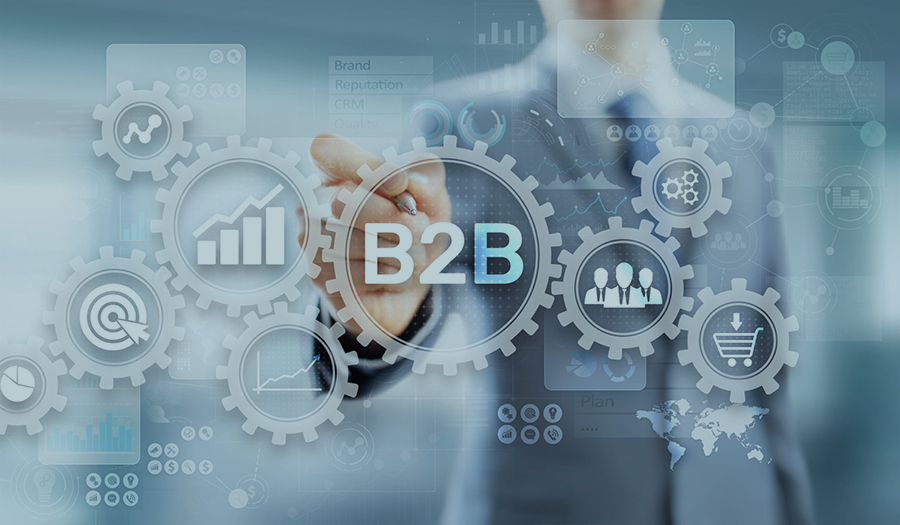Magento B2B and Magento B2C: key differences between the two platforms
In the world of e-commerce, customer needs and expectations vary significantly between B2B and B2C segments.
3 min read
Por Victor Esquivel | Aug 10, 2021
Digital transformation is something that has been talked about in recent years, it is the adoption of new technologies in the different areas of a company to change the way it operates. It aims to optimize processes, improve competitiveness and offer added value to customers.
Despite the great benefits it was seen as a medium term project, but clearly the pandemic came to accelerate the adoption process, this made companies go headlong into launching B2C eCommerce platforms thinking that this was the solution, which was a big mistake.
Today, in our role as consultants, we are seeing many companies taking the decision to close those efforts, the reason is very simple, they did not make a strategic process to define the actions to be taken, they simply let themselves be carried away by the heat of the moment and the trend that others were following.
Before undertaking a process of change in business strategy, it is important to sit down and analyze the business model to define the route to follow, why?
Launching into B2C sales leads companies to make the mistake of creating what I call a virtual grocery store, they simply set up a website where they drip the product catalogue, which generates two situations:
Clearly after a few months these situations will make you come to the conclusion that you want to close your B2C eCommerce.
So what can I do? You may be asking yourself.
The first thing to do is to ask yourself these questions:
What is B2C and what is B2B?
Where do my sales come from today? If more than 90% is from sales to other companies (B2B), then a B2C eCommerce is not the answer, unless you want to generate a channel that allows me to have contact with the end consumer, where I can generate a differentiated value proposition and support my other channels.
If my sales come from B2B, is there an opportunity to optimize and increase routes? If the answer is yes, then what your company needs is a B2B eCommerce. If my sales come from B2B, is there an opportunity to optimize and increase routes? If the answer is yes, then what your company needs is a B2B eCommerce.
Having this clear, understanding that my sales come from B2B and if I see an opportunity in B2C to generate closeness with the end consumer and support my other channels, then the strategy to follow is to implement both.
The next step is to work on the analysis of B2C and B2B eCommerce.
The analysis to be carried out for B2C eCommerce should be based on defining the business model and the value proposition, the business model is defined as that which describes the basis on which a company creates, provides and captures value, while the value proposition is defined as that differentiator.
In other words, it is to create a differentiated offer where we will be able to offer the end customer things that he will not be able to find elsewhere, which will allow us to generate sales.
On the other hand, the B2C channel will become a support to the modern and traditional channels, especially for product innovations and new launches, because as you know it normally takes weeks or even months to get one of these to a shelf, but having my own channel I can have it at the consumer's hand immediately and this will then accelerate the purchase of the product in the other channels.
In the case of B2B eCommerce, it is an analysis from a numerical and logistical point of view, it should be based on how much I want to increase my sales and optimise my costs, why?
Defined how to handle the B2C and B2B eCommerce model, the final piece of the puzzle is the platform, for this I need a platform that allows to handle both, as they have very different characteristics, in the market there are very few tools with those capabilities and in fact according to Gartner & Forrester the best is Magento Commerce part of the Abode suite, a leading cloud commerce platform for merchants and brands in the B2C and B2B industries, which has a robust portfolio of cloud-based omni-channel solutions that enable merchants to successfully integrate digital shopping and physical experiences.
To learn more, we invite you to schedule a demo.
Or if you want to learn about some success stories of companies that have implemented B2C and B2B models we invite you to download this ebook.

In the world of e-commerce, customer needs and expectations vary significantly between B2B and B2C segments.

The exchange of supplies between companies is very common, since they provide what is necessary for the generation of products, such as raw materials...

E-commerce, also known as electronic commerce, is the buying and selling of products or services online